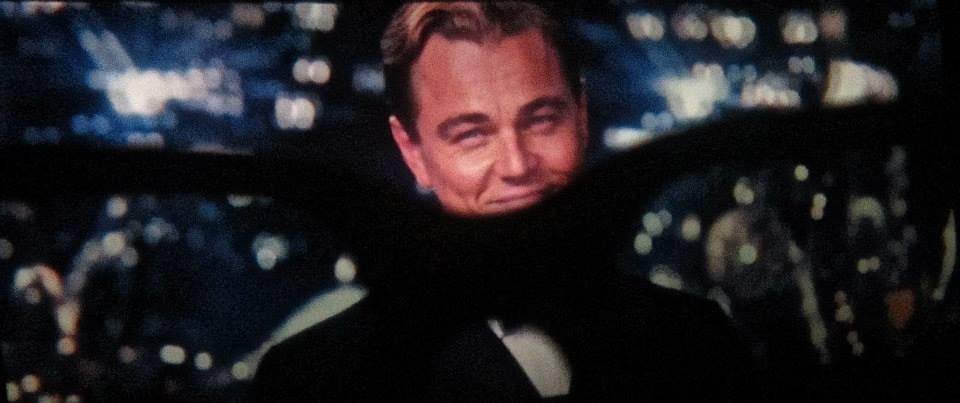I saw Baz Luhrmann’s THE GREAT GATSBY through 3D glasses, and I would not have seen it any other way. The whimsical unreality of it, the whole cinematic pop-up book of staggered planes and optically induced kinesthetic illusion, translates not only the novel’s style but its thematic essence. Gatsby is a novella of memory, of how desire drives us inexorably into the past, of the way memories become dreams, and dreams in turn become new realities to be remembered themselves, all the while grasping at an elusive future and its ever vanishing doppelganger, the present. And of course the cinema is that famous “dream factory” and also a room in that great repository of nostalgia that photography in all its forms makes possible, and, yes, Fitzgerald polished his little gem right around the time that American life itself was first conceived of as a sort of dream.
The temporal structure of the film is of an old medium – signified by the flickering white light with which the opening credits start and the closing ones end – funneled into the technological wonderland that the movies are today. The filmmaking plays with time and memory, from the retro charm of its casting, to the ebb and flow of the soundtrack from the historical to the modern (in truth Gatsby is all about modernity, and the concept of it, with its constant, end-of-the-road up-to-date-ness). When we put on our magic glasses and tumble into space we no more know if we are going forwards or backwards than we do in our actual dreams (which are variously interpreted, after all, as either prophecies or jumbled memories).
The story of Gatsby is so familiar that there is little to say of it here, beyond the basic observation that in this age of the Great Recession, the dream of American life is still vivid, yet feels in danger of slipping away, with the mad confluence of class, region, race, ethnicity, sex, and gender that make the experience of Gatsby, whether cinematic or literary, one of self-recognition and personal regret. Tobey Maguire, as the narrator and participant-observer Nick Carraway, Joel Edgerton as the brash monied scion Tom Buchanan, and Elizabeth Debicki, in a sharp period turn as the Art Nouveau-ish Jordan Baker, could hardly, for my money, be better. It took a while for Leonardo DiCaprio and Carey Mulligan to convince me as Gatsby and Daisy, which was surprising to me in her case, less so in his. But as the film pulled me backwards – or forwards – into the sordid dream that teases us with its allure and familiarity, those doubts dispersed. GATSBY is a dream dashed and turned to art, and it is a recurring one in our culture, that we awake from again and again, and have little trouble remembering.
Check listings for viewing options.
